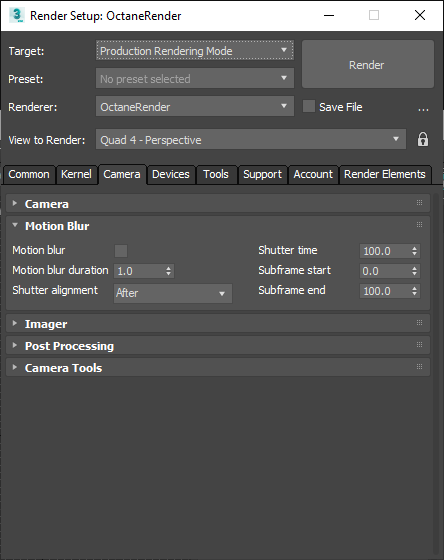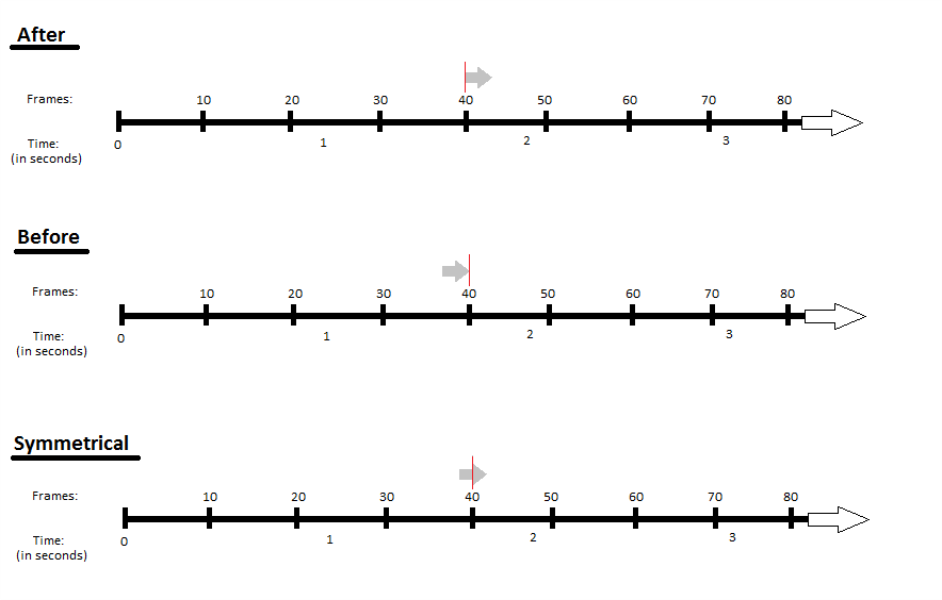
The Motion BlurAn optical phenomenon that occurs when a camera’s shutter opens and closes too slowly to capture movement without recording a blurring of the subject. parameters controls the shutter interval. The value is relative to the frame time. Shown below are the Motion Blur parameters under the Render Setup window, but similar settings are found under the Modify Panel of Octane Camera and Universal Camera.

Figure 1: Octane Motion Blur settings in the Render Setup window
Override Motion Blur - Replaces the global settings with its own camera motion blur settings. The global settings can be round in Render Setup > Camera Tab > Motion Blur.
Motion Blur - Enables or disables motion blur for the camera.
Motion Blur Duration - Overall control of motion blur settings.
Shutter Alignment - Specifies how the shutter interval aligns to the current time, which determines when the camera shutter is triggered. The options are Before, Symmetrical, or After, and they apply to each frame thereafter relative to the given frame rate.

Figure 2: Illustrating the After, Before, and Symmetrical Shutter Alignment
Shutter Time - The shutter time percentage relative to the duration of a single frame, which controls how much time the shutter stays open. You can set this parameter to any value above 100%.
Subframe Start/Subframe End - Specifies the approach, in terms of proportion (%) to simulate the camera’s shutter speed for that particular frame. OctaneRender uses Subframe Start and End percentages to render only a portion of a particular frame. If the scene has a lot of motion blur, OctaneRender® uses these parameters to render a piece of that motion blur. The default Start and End values of 0% and 100%, respectively, render the whole frame.
Note: Motion Blur with DisplacementThe process of utilizing a 2D texture map to generate 3D surface relief. As opposed to bump and normal mapping, Displacement mapping does not only provide the illusion of depth but it effectively displaces the actual geometric position of points over the textured surface. is currently not supported.